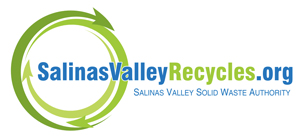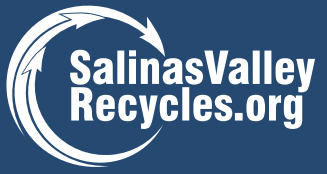Dear Wally Waste-Not,
I saw your graphic of the new landfill section in your August Newsletter. I’m just wondering what most people are disposing of to fill their large trash bins. We have a family of 5 and we never fill our trashcan. In fact, it’s typically less than half. And we have the second to the smallest size.
Question: What are other people putting in their trash? I just don’t get it. I walk the dog daily and it seems like the trash bins are large and bulging at every house. Do you have any idea what almost everyone else is throwing away?
~~~~~~~~~~~~~~~~~~~~~~~~~~~~~~
Good Salinas Resident,
Thank you so much for reaching out to ask about the composition of trash coming from residential garbage carts. Additionally, thank you for doing your part as a family of 5 to reduce your garbage footprint!
When we lift lids of residential carts we mostly find packaging, items that should be in recycling (cardboard, paper, CRV beverage containers, metal, and glass), food waste, and miscellaneous household trash. We find most often that very full garbage bins are the result of underutilized recycling, excessive purchasing/packaging and cart not sized appropriately for the use/family size (people subscribing to garbage service below their actual needs). It sounds like your household is doing a good job utilizing your recycling cart.
Salinas Valley Recycles completed a waste composition study to give us a more complete picture of what is going into our landfill and what has changed since the last study in 2007. Results show that more plastics and more organic waste (food & plants) are being thrown out now by residents than in 2007. However, the amount of recyclable items going to the landfill has decreased do that’s good news. I’ve included a snippet about residential waste characteristics below. Information like this indicates where individuals have the greatest opportunities to make changes that impact the community.
Here at Salinas Valley Recycles we are striving to reach and educate all residents that their personal habits and actions cause cumulative impacts for the whole community and world. However, as a small staff, we need as many community advocates as we can get to help spread our messages. If you feel comfortable engaging your neighbors in discussions about waste and want some talking points, we are always here to help foster education!
Again, thank you for doing your part to reduce your family’s garbage!
*Salinas Valley Waste Characterization Study – October 2019
Residential
The composition data for residential waste are presented by material class in Figure 9. As shown, Organics is the most prevalent material class by weight, making up nearly half (49%) of the waste stream. The second-most prevalent material class is Paper (17%), followed by Other Materials (14%).
Four of the top 10 material types are compostable, together representing nearly two-fifths (38.1%) of residential waste. The three most prevalent material types are food – not donatable – unpackaged non-meat (20.2%), remainder/composite organic – non-compostable (10.4%), and food – not donatable – packaged non-meat (9.0%).
Figure 9. Composition by Material Class, Residential

Figure 10. Composition by Recoverability Category, Residential


